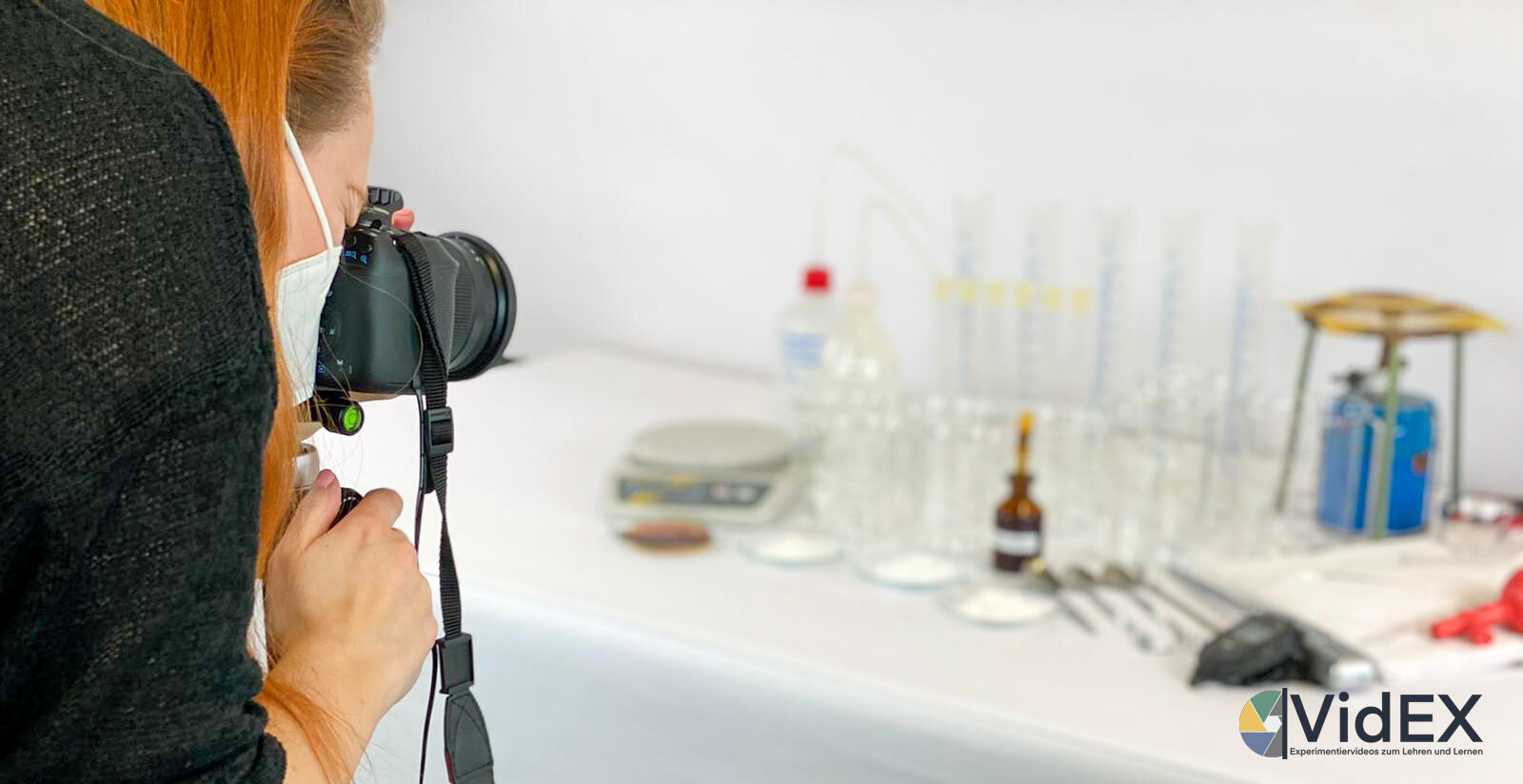
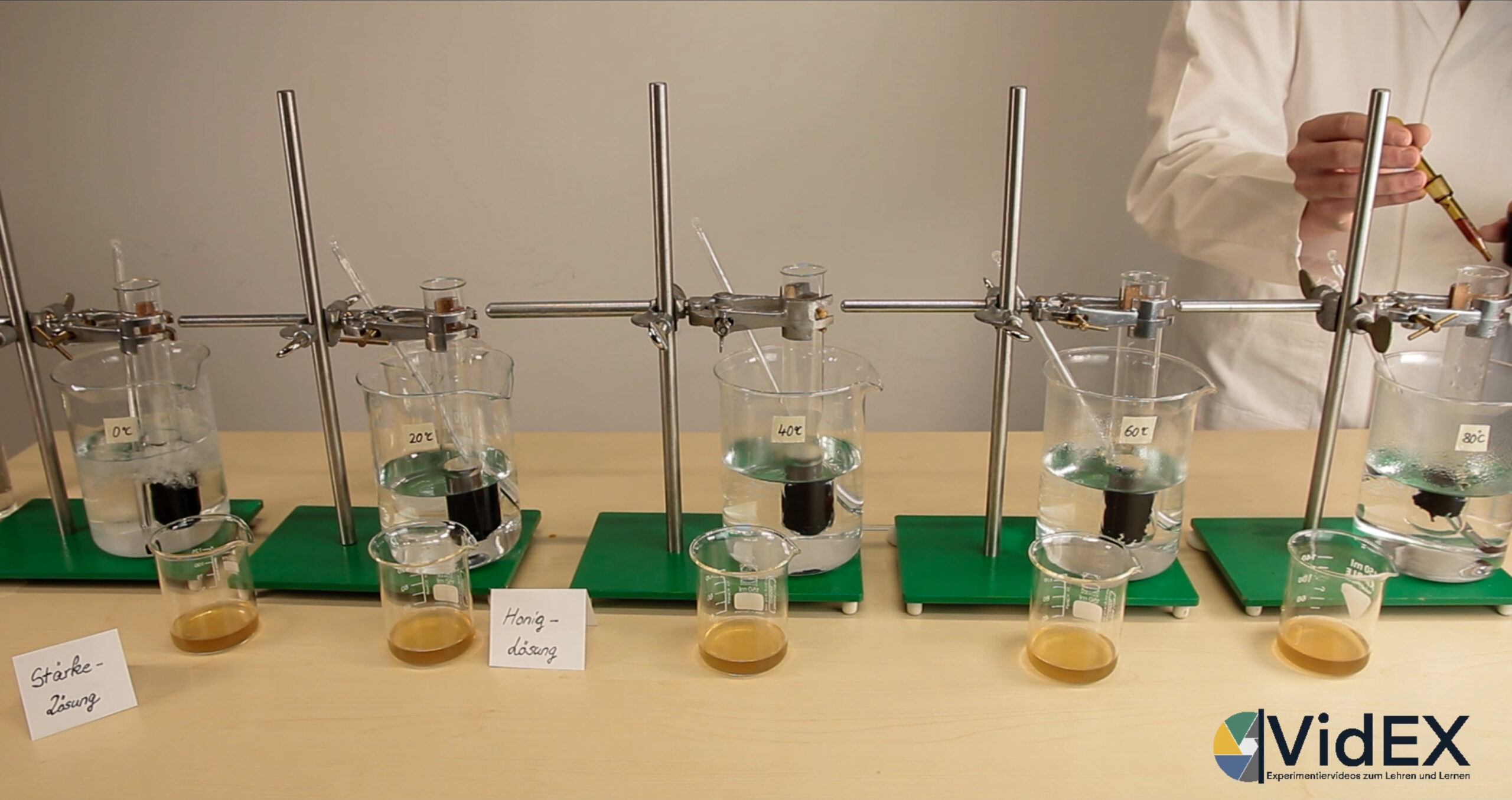
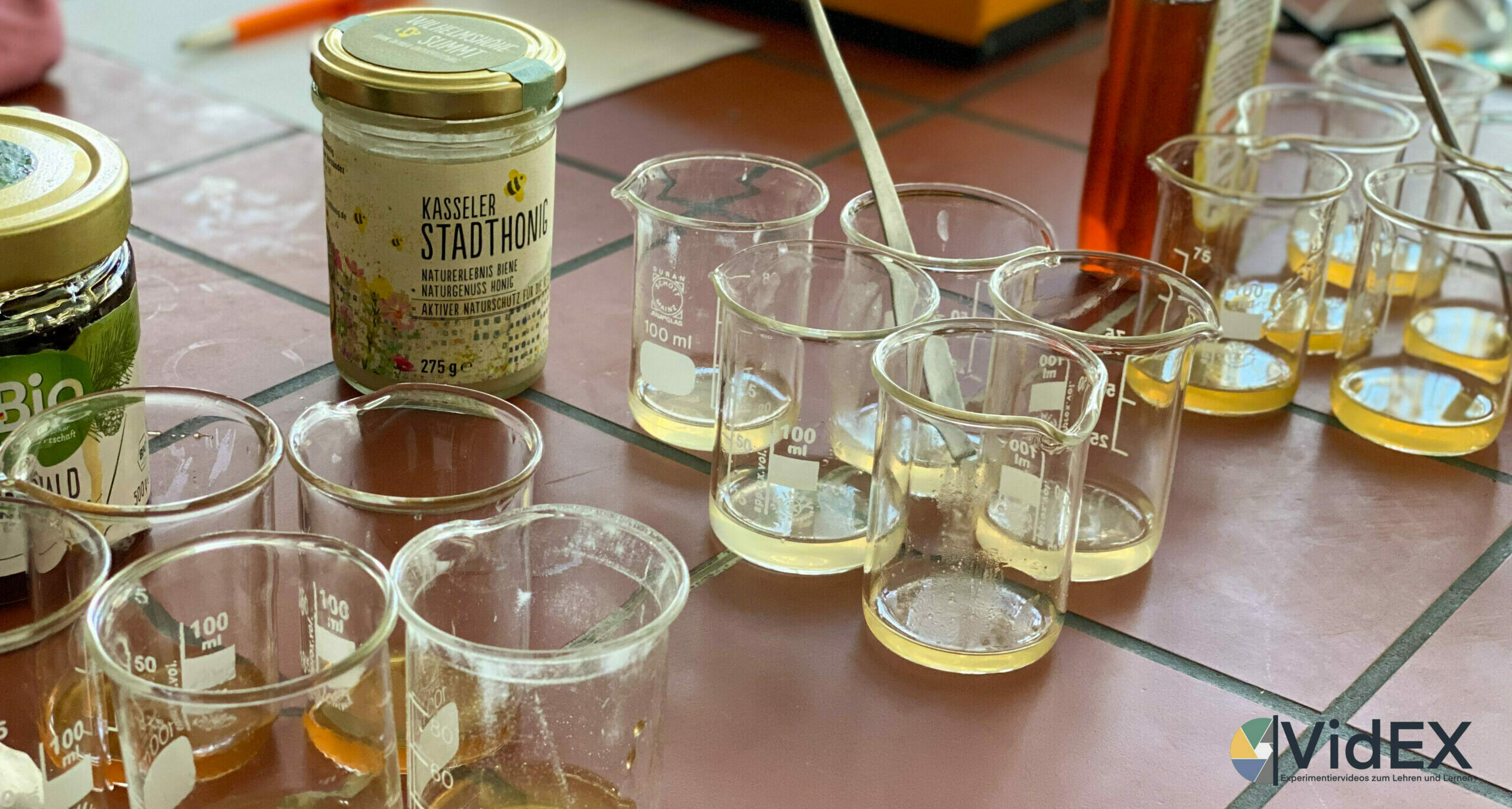
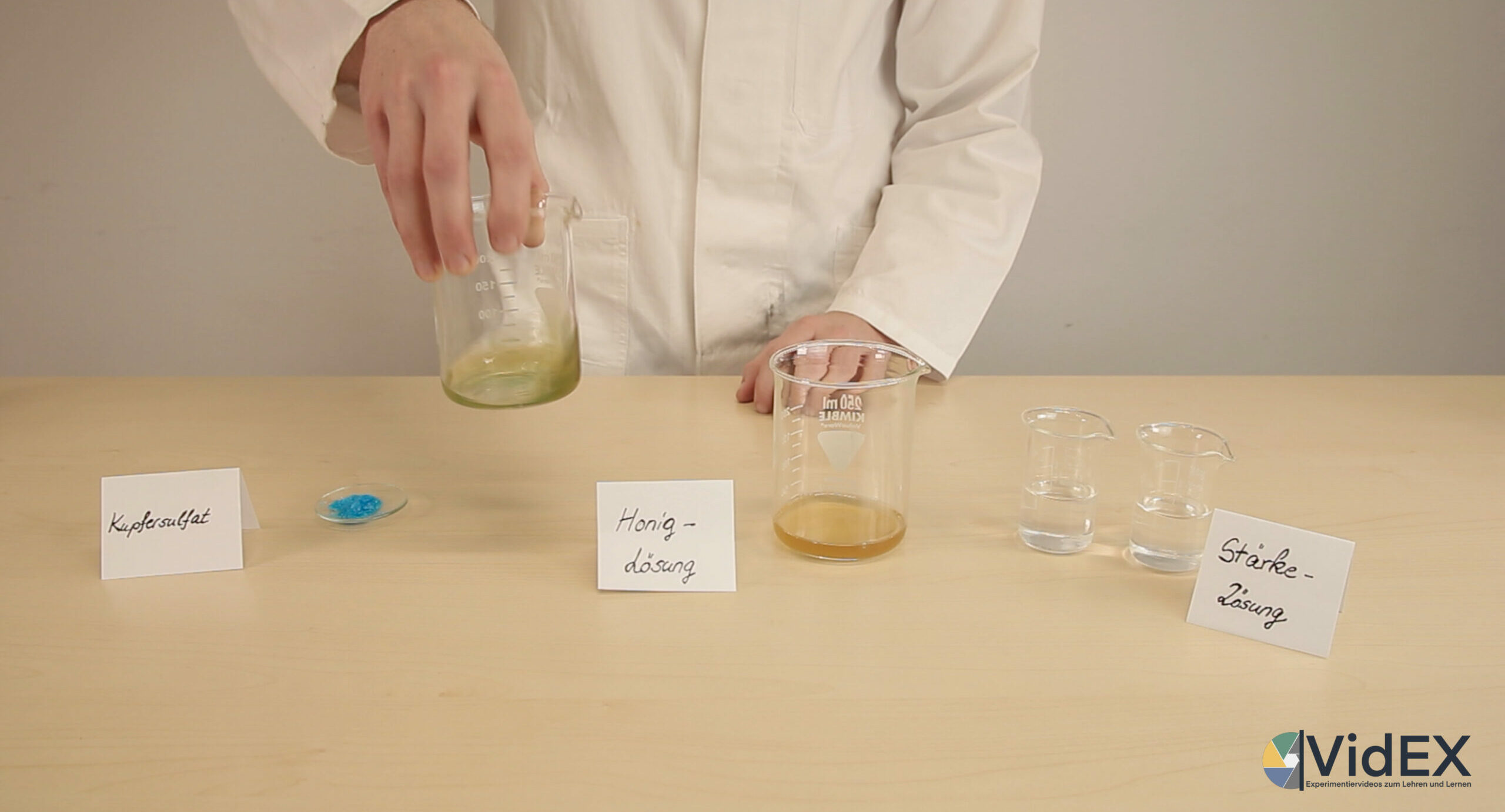
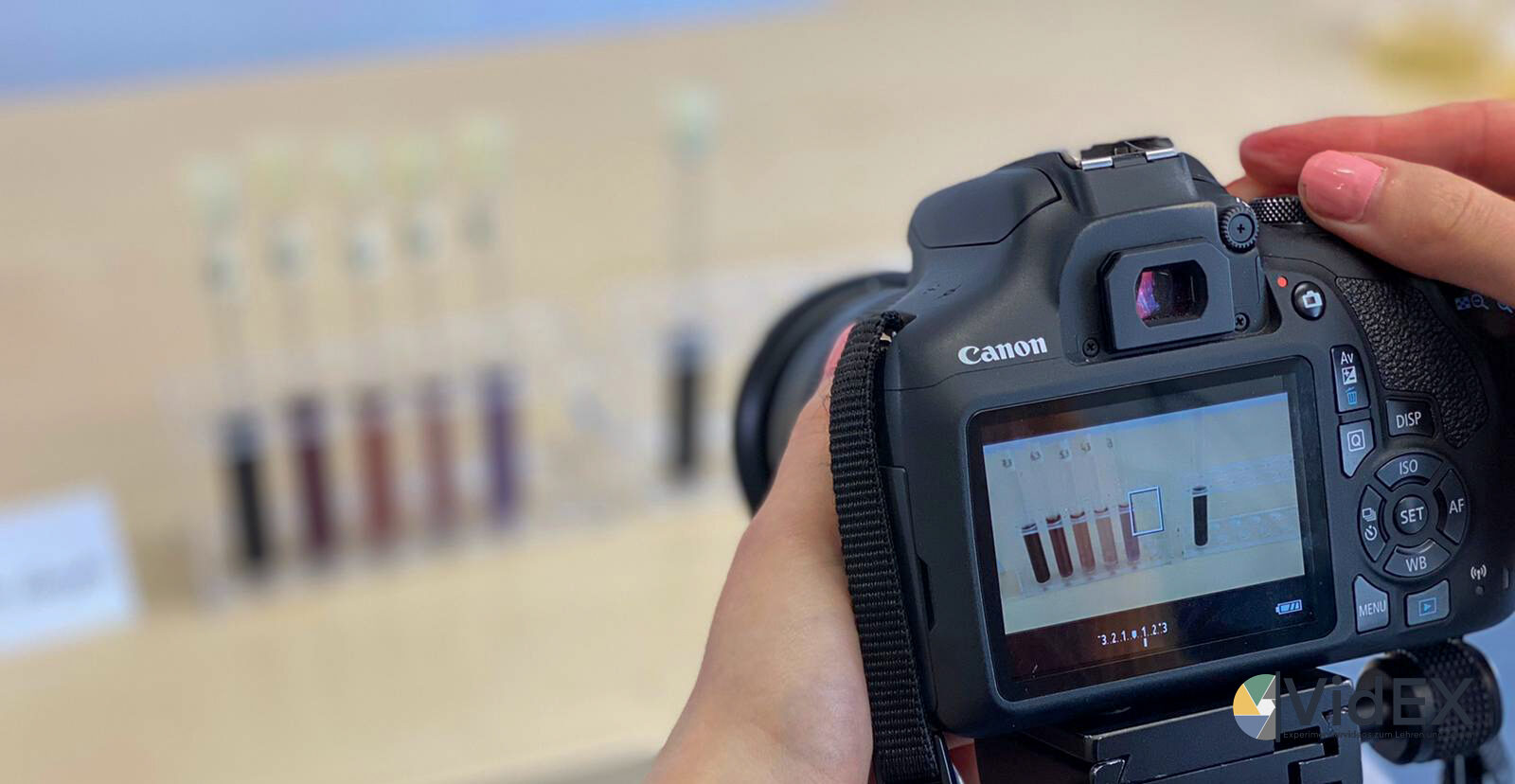
Enzymatics is an established subject area in the middle school as well as especially in the upper classes. This module should support students in planning, carrying out and evaluating experiments to influence enzyme activity and to provide a laboratory-based, visually supported development of the underlying subject.
Honeybees are the main actors and actresses in the experiments on enzyme activity. To be more precise, we are looking at the natural product produced for their own supply – honey! Besides various sugar types, honey also contains enzymes such as honey diastase. Belonging to the amylases, this enzyme plays an important role in polysaccharide digestion in bees. The activity and function of these enzymes is influenced by a variety of factors. In this module, the influence of pH value, temperature and heavy metal ions can be tested experimentally.
The development of each influencing factor through the video material can be carried out either parallel in small groups with different topics or individually by the students with the same topics.
All videos start with the complete set up, followed directly by the experiment. In line with the process of gaining scientific knowledge, the phenomenon can be discussed with the students in previous lessons and questions and hypotheses can be derived. For the planning of the experiments, first the material images and if necessary, the start image of the video as well can be used to support the construction of the respective experiment in a differentiated content-related gradation. One`s own planning can be compared and reflected with the implementation shown in the video with regard to methodological decisions and difficulties (e.g. setting up). Just as the evaluation of the experimentally generated video data allows for an accountability and examination of the hypotheses set up.
In the presentation of the experiments in the videos, there are different points of contact to promote technical methodical skills for experimentation:
Pipetting is a very common technique in laboratory work. In the video, pipetting is brought to the foreground by means of an enlarged view. This technique and the exact way of working involved can be analysed during the experiment using this setting and other pipetting processes. Students can also use the video to perform practical pipetting exercises.
The experiment to test the effect of temperature on enzyme activity can be worked out, using two videos with different developments. By comparing the possible approaches, students can identify confounding variables and conduct a subject-method error analysis.
During the series of measurements to test the influence of copper sulphate on enzyme activity, little change is seen in the beginning. For each subsequent measurement, the pupils can predict justifiably possible changes and incorporate their knowledge of enzyme activity.
Even in the approach without copper sulphate, the activity is “apparently” not high, which leads to further questions about other influencing factors (e.g. What is the temperature of the initial solutions?).
The video material “Honey Experiments”
pH value Experiment
In this video, the pH of five “Honey preparations (inlc. starch)” and a blank sample is varied using different buffer solutions
Temperature Experiment (Variant 1)
In this first version of the temperature experiment, five “Honey preparations (incl. starch)” are tempered differently. The starch indicator is combined in each of the test tubes with the corresponding amount of the tempered honey solution.
To the videoTemperature Experiment (Variant 2)
In the second version of the temperature experiment five starch solution preparations (incl. indicator) are tempered differently. The honey solution is added directly to these preparations.
Inhibition Experiment (Heavy Metal Ions)
In the video samples are taken every 10 minutes for a total of 40 minutes from a “hone preparation” mixed with and without copper sulphate and tested with the starch indicator.
Here you can download the image with all the necessary materials, in addition to each experiment video. These can be used by your students as support and for planning the experiments.
We got the idea and suggestion for the experiments in this module from a great article:
Zunftmeister, F., Heil, I. & Bohrmann, J. (2018). „Einer für Alles“ – Verwendung von Honig für Schulexperimente zur Enzymatik. BU praktisch, 1(1). https://doi.org/10.4119/bupraktisch-1100